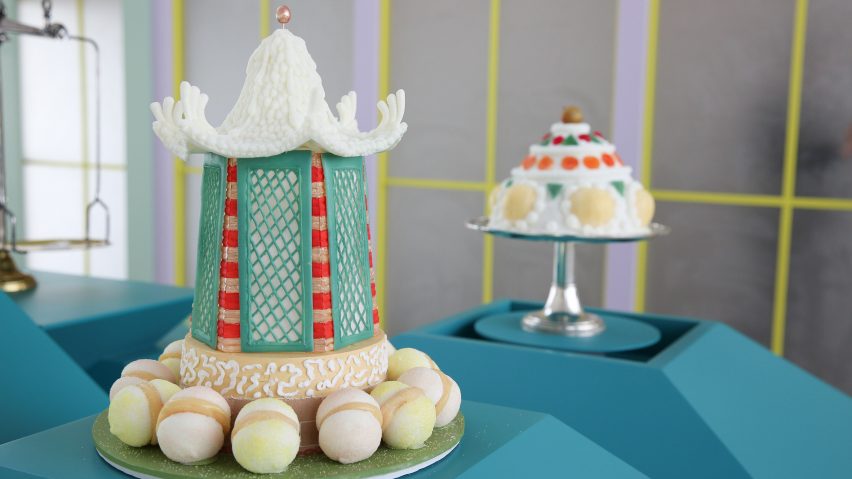Food design studio Bompas & Parr has created an incredibly lightweight edible meringue using a process originally developed to manufacture the lightest solid material ever made.
The multidisciplinary London-based studio headed by Sam Bompas and Harry Parr worked with materials experts at the Aerogelex laboratory in Hamburg to translate the properties of the world's lightest solid into an edible dessert.
Aerogel is a material developed in the 1930s by American chemist Samuel Kistler, who identified a method for removing the liquid component of a gel and replacing it with gas.
The family of materials Kistler invented retain the internal matrix of the gel and comprise between 95 and 99.8 per cent air. The extreme low density of these sponge-like structures gives aerogels their unique properties.
As well as being incredibly lightweight, aerogels are exceptional insulators and are used in contexts ranging from cladding pipes to capturing cosmic dust.
Bompas & Parr adapted the process used to create aerogels in order to produce a meringue that it described as "a taste of the sky".
Aerogels can be made from a variety of materials, but for this project the studio focused on the globular proteins found in egg whites, which are called albuminoids.
The process used to create the meringue begins with a hydrogel of egg white, which is cast in a mould before being submerged in a bath of calcium chloride and water.
The liquid in the jelly is then replaced with liquid carbon dioxide, which can be transformed into gas during a process known as super-critical drying.
The gas is removed by venting, leaving behind nothing but the skeleton of the original gel. This results in a meringue comprising 96 per cent air and weighing just one gram.
The designers will unveil the meringues and offer the first opportunity to taste them at the King Abdulaziz Centre for World Culture (Ithra) in Dhahran, Saudi Arabia during Ithra's Creativity Season, Tanween, from 10 to 26 October 2019.
Bompas & Parr is known for its experimental approach to working with food, which regularly crosses over into the worlds of architecture and immersive experiences.
Its previous projects have included the creation of a non-melting ice lolly, a vegan hotel suite and a whisky tasting experience involving a church organ that produces sound and lighting effects to heighten the perception of different flavours.

